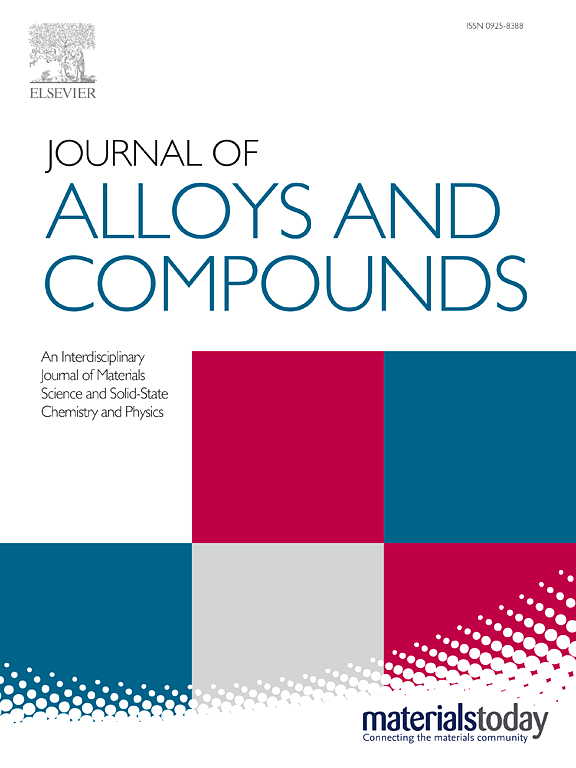MOF-on-MOF-derived core-shell structural Co/N co-doped porous carbon supported ultrafine Ru nanoparticles for boosting hydrogen evolution
IF 5.8
2区 材料科学
Q2 CHEMISTRY, PHYSICAL
引用次数: 0
Abstract
The development of efficient and cost-effective heterogeneous catalysts is crucial for promoting hydrogen production from ammonia borane (AB) hydrolysis. In this study, a MOF-on-MOF core-shell structure (ZIF-67@MOF-74) with a regular dodecahedral morphology was developed and then converted into a core-shell Co/N co-doped porous carbon (NC1@NC2) via a one-step carbonization process. Subsequently, ruthenium nanoparticles (Ru NPs) were uniformly dispersed on the heterogeneous interfaces of this core-shell structural carrier, creating a unique sandwich-like configuration, NC1@Ru@NC2. The interaction at the heterogeneous interface enhances the charge transfer and modulates the interfacial charge state, which not only firmly anchors the Ru NPs but also precisely optimizes their electronic structure. The core-shell design can further improve the dispersion and protection of Ru NPs, leading to a significant increase in the exposed metal site density (EMS). Therefore, the resulting catalyst demonstrates excellent catalytic activity and stability in AB hydrolysis, with an initial turnover frequency (TOF) of 408.9 min–1 at 25 °C and 70.9% activity retention after ten cycles. This innovative catalyst preparation approach achieves Ru-based catalysts with core-shell structure, which provides a promising strategy for developing high-performance catalysts for AB hydrolysis with enhanced cycling stability.

mof -on- mof衍生的核壳结构Co/N共掺杂多孔碳负载的超细Ru纳米颗粒促进析氢
开发高效、经济的多相催化剂是促进氨硼烷(AB)水解制氢的关键。在本研究中,开发了具有规则十二面体形态的MOF-on-MOF核壳结构(ZIF-67@MOF-74),然后通过一步碳化工艺将其转化为核壳Co/N共掺杂多孔碳(NC1@NC2)。随后,钌纳米颗粒(Ru NPs)均匀分散在核壳结构载体的非均相界面上,形成独特的三明治状结构NC1@Ru@NC2。异质界面上的相互作用增强了电荷转移,调节了界面电荷状态,不仅牢固地固定了钌纳米粒子,而且精确地优化了它们的电子结构。核-壳设计可以进一步改善钌NPs的分散和保护,导致暴露金属位点密度(EMS)显著增加。因此,所制得的催化剂在AB水解过程中表现出优异的催化活性和稳定性,在25°C条件下,初始周转频率(TOF)为408.9 min-1, 10次循环后活性保持率为70.9%。这种创新的催化剂制备方法实现了具有核壳结构的钌基催化剂,为开发具有增强循环稳定性的高性能AB水解催化剂提供了一种有前景的策略。
本文章由计算机程序翻译,如有差异,请以英文原文为准。
求助全文
约1分钟内获得全文
求助全文
来源期刊

Journal of Alloys and Compounds
工程技术-材料科学:综合
CiteScore
11.10
自引率
14.50%
发文量
5146
审稿时长
67 days
期刊介绍:
The Journal of Alloys and Compounds is intended to serve as an international medium for the publication of work on solid materials comprising compounds as well as alloys. Its great strength lies in the diversity of discipline which it encompasses, drawing together results from materials science, solid-state chemistry and physics.
 求助内容:
求助内容: 应助结果提醒方式:
应助结果提醒方式:


